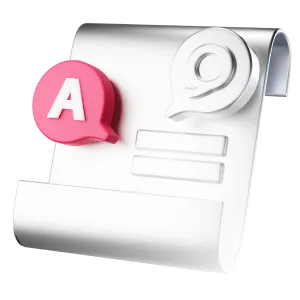How much does it cost to replace a control arm?
Control arm replacement costs depend on which control arm needs to be repaired: the upper or lower. That said, general repairs costs are anywhere from $600-$750.
How long does it take to replace a control arm? Typically, a control arm replacement takes around 1 to 1.5 hours. As control arm bushings need to be completed with a special tool during the replacement process, this increases labor time and may also increase labor costs.
What parts do I need for my control arm replacement and how much do those parts cost?
Control arms are composed of three main pieces: bushings, the control arm, and ball joints. If you experience a faulty control arm, you may need the following parts:
- Bushings: Bushings are generally made of a rubber material and are attached to your car’s suspension and steering systems to prevent too much movement and reduce noise. This part costs anywhere from $100 to $120.
- Control arm: The control arm is attached to the suspension link which connects to the steering wheel. A broken control arm can lead to unpredictable and dangerous steering. To replace a control arm, you can expect to pay between $200 to $550 depending on car size and which control arm needs replacing.
- Ball joints: Ball joints help enhance your steering and are an important part of your suspension system. They allow for your front suspension to pivot movement through the steering knuckle and control arms and can cost anywhere from $80 to $200 to replace.
You can purchase control arm assembly parts for your car from auto parts stores like AutoZone, NAPA Auto Parts, and Advance Auto Parts, as well as online retailers such as Amazon and RockAuto. Three of our recommended brands for control arms are Moog, Dorman, and Mevotech. For ball joints, Moog, ACDelco, and TRW Automotive are our brand recommendations, while Energy Suspension, Moog, and Prothane are our recommended options for bushings. Keep in mind that the best parts and brands for your control arm replacement will vary based on your vehicle’s year, make, and model.
-
Should I buy OEM or aftermarket parts?
-
Where can I buy parts for my control arm?
Where can I get my control arm replaced?
When taking your car for a control arm replacement, the most difficult task is finding a mechanic—next to budget, of course. Using real hourly rates, Jerry’s GarageGuard™ compares over 2,500 verified auto body shops in the US so you can determine which service is the best fit for you.
Jerry’s GarageGuard™ also provides information on diagnostic fees (and if they’re included in your service charges) and gives real reviews from real customers to help with your car repair journey.
How will a mechanic replace my control arm?
When you take your vehicle in for a control arm replacement, your mechanic will first place your car on a raised platform or jack stands, and conduct a routine inspection to determine whether your rear control arm or front control arm needs to be removed. Then, they will likely complete the service in these steps:
- Remove the wheel: Once your vehicle is lifted, the mechanic will remove your wheel using a ratchet and socket and set it aside. This allows them to easily access the ball joints.
- Separate ball joints from hub: Next, they’ll remove the studs that extend from the ball joint to the wheel hub and place a ball joint separator between the upper and lower ball joints and the hub.
- Separate control arm from the cradle: Depending on your vehicle, your mechanic may have to use two wrenches to access your control arm bolt due to limited space. Once the nuts and bolts are entirely removed, they can slide the damaged control arm out.
- Install new control arm: After the mechanic removes the bad control arm, they’ll install a new one by completing these steps in reverse order.
- Alignment: Finally, they’ll do an alignment to make sure that all parts are secure, your vehicle’s suspension is in working order and your tires operate in a straight line.
What happens if I don’t replace my control arm?
Not replacing your control arm(s) when you notice it’s damaged can not only further impact your vehicle, but will throw off your entire suspension system. Control arms help to control the suspension as your car moves down the road, whereas rubber bushings contribute to noise and vibration reduction.
If either of these are affected, then you can experience the following:
- Unpredictable or hard-to-control steering
- Vehicle pulling to one side
- Increased risk of car accidents
What is a control arm?
Control arms are a key part of your car’s overall stability and driving performance.
Your vehicle has two specific types of control arms: upper and lower. They are one of the main components of your suspension system and connect the front wheel assemblies to your vehicle frame, allowing you to drive your vehicle.
When should I replace the control arm on my car?
Control arms are made to withstand a lot and often only experience damage due to frame stress or a faulty bushing or ball joint. If you experience any of these common symptoms of a bad control arm, then it’s time to visit a mechanic:
- Uneven tire wear: When your control arm needs replaced, often you’ll experience uneven tire wear as a result. The wear usually occurs on the inner or outer edges of a tire’s tread, which is due to alignment issues.
- Unstable steering: This can be more prominent if you’re on uneven terrain or surfaces. A wandering steering wheel—pulling to one side—or consistent vibrations may be indications that your alignment is off or that your control arm is starting to fail.
- Popping sounds: Considered an early sign of a faulty control arm, a popping sound will happen if you hit a pothole or speed up. This signals that your ball joint or bushings are the culprits, and in turn, your control arm may face damage.
How often should a control arm be replaced?
Both upper control arms and lower control arms should be replaced every 90,000 to 100,000 miles. As control arms can wear and bend over time, it’s important to routinely inspect your vehicle for signs of early damage.
Various factors can shorten the lifespan of a control arm, including poorly maintained roads, uneven terrain, heavy loads, poor car maintenance, and car accidents.
Can I replace control arms myself?
Yes—upper and lower control arms can be replaced at home. That said, this type of repair will take a mid-level understanding of car parts and your vehicle’s steering system. If you are unsure of your mechanical DIY skills, it’s best to take your car to a licensed mechanic for a control arm replacement.
Keep in mind: Even if you replace your car’s control arm(s) at home, you will still need to take it to a mechanic or dealership like Nissan to have a wheel alignment to prevent tire damage.
FAQ
-
Should I replace both control arms if one is bad?
-
Does the upper control arm affect alignment?
-
How long can you ride on a bad control arm?
John Davis is an expert automotive writer and former automotive mechanic. John\\\\\\\’s work spans multiple categories, and he relishes the opportunity to research a new subject and expand his area of expertise and industry knowledge. To date, John has written more than 200 articles covering car maintenance and care, car advice, how-to guides, and more. Prior to joining Jerry’s editorial team, John worked as a mechanic and freelance writer, creating content for clients including HotCars and SetPower.

Kathleen Flear is an expert insurance writer and editor who previously lead up Jerry’s editorial team as director of content. Kathleen empowers drivers to make smart car ownership decisions through best-in-class articles on insurance, loans, and maintenance. Prior to joining Jerry in 2021, Kathleen served as managing editor for a team of SEO content marketing professionals at Article-Writing.co and worked as a freelance writer and editor for a range of digital publications, including Chicago Literati magazine and Golden Words. She earned a bachelor’s degree in English language and literature from Queen’s University, and a master’s degree in creative writing and fiction from Sierra Nevada University.

Jessica Barrett is a senior insurance writer and editor with 10 years of experience in the automotive and travel industries. A specialist in car insurance, car loans, and car ownership, Jessica’s mission is to create comprehensive content that car owners can use to manage their costs and improve their lives. As a managing editor for a team of writers and insurance specialists, Jessica has edited over 2,000 articles for Jerry on topics ranging from local insurance shopping tips to refinancing car loans with bad credit. Before joining Jerry as a senior content editor in 2021, Jessica created visual content for clients such as Expedia, Vivid Seats, Budget Direct Car Insurance, Angie’s List, and HomeAdvisor. Her content was published in Business Insider, Forbes, Apartment Therapy, and the BBC.
*The price information provided on our car repair webpages is intended for general informational purposes only. Actual prices for car repair services may vary based on various factors, including but not limited to the make and model of your vehicle, the extent of repair required, and the prevailing market conditions. All prices for real repair shops are estimations based on our research only. Therefore, the prices listed on our webpages should not be considered as final quotes or binding offers.







